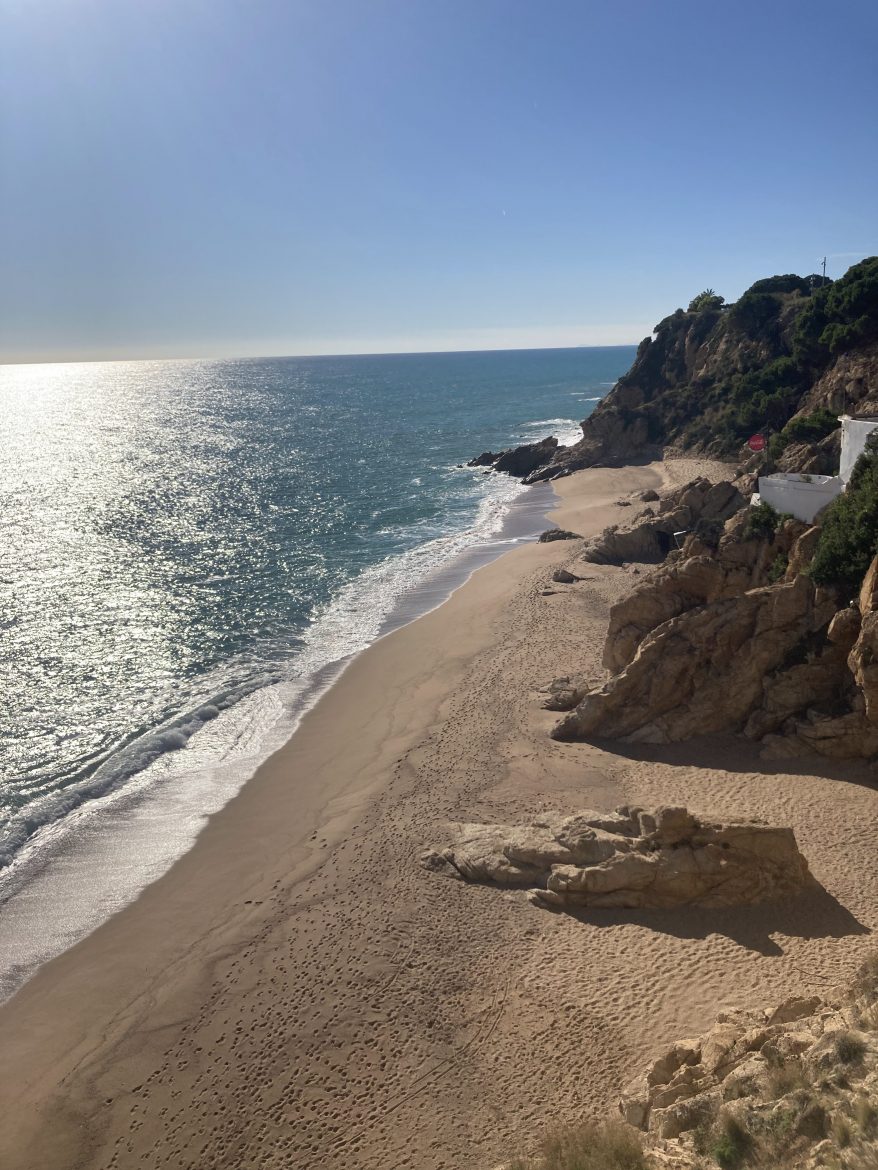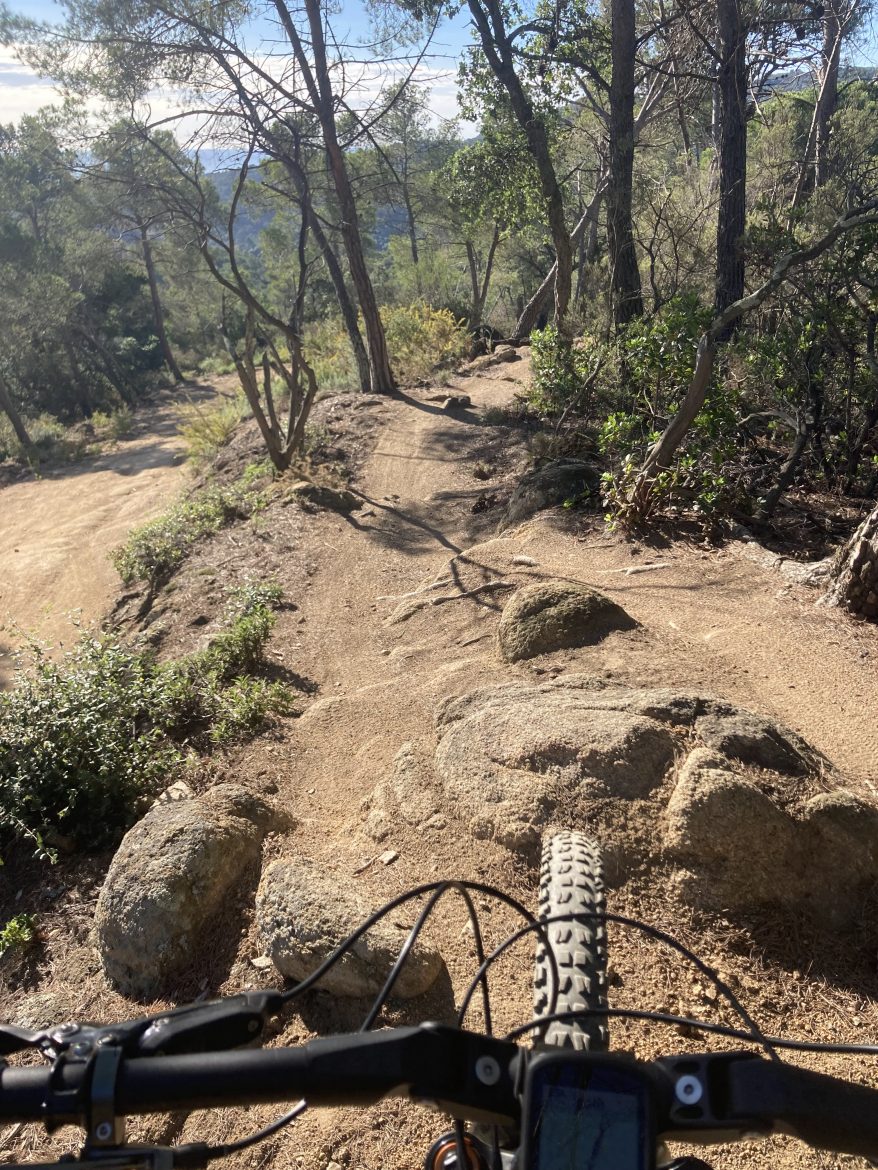
May 9th, 2021 was the deadline, pandemic and all. My 30th birthday. My partner and I decided that by this date, we would be back in sun-filled Barcelona where we met in 2013. We always wanted to move back. It was almost like a missing chapter of a book with the following chapters missing some context. My partner missed the social culture and friends. She is Spanish after all. I missed the intricate public spaces, architecture, and yearned to learn new languages and experience another culture. Oh yeah, plus the food. Jamon iberico — the best quality Spanish dried ham. But, what is an ex-ski patrol, country hillbilly (me) to do for fun in Barcelona? Bikes, of course.
Waking with a late morning coffee made in our apartment, we chatted about how to spend one of our first days in the city. We decided to ride city bikes around modernist architect Antoni Gaudi’s most well known works like Casa Batlló and La Sagrada Familia, and then grab some food and talk about the rest of the day.
From the snow capped Pyrenees to the warm Mediterranean Sea, Catalunya, Spain is often described as the paraíso ciclista (cycling paradise), with mountain biking on the menu year-round. The country has the second highest average altitude, only behind Switzerland, and has the only deserts in continental Europe.
There is much diversity in ecosystems, landscapes, and culture. Barcelona is the capital of Catalunya, an autonomous community of Spain located in the northeastern-most corner of the country with its own language, Catalan. Catalunya historically stretches from Valencia to the south well into France to the north. In fact, the Catalan language is more similar to French than Spanish. People also typically speak Spanish, of course. Catalan cuisine is well known for its wine, vermouth, and food such as pa amb tomàquet (tomato bread) and butifarra (pork sausage).
Biking Barcelona

There are a ton of places to ride just pedaling from Barcelona’s city center as well as via the commuter trains that you can simply roll your bike onto, often quite affordably. Be sure to look for Rodalies (R) or Media Distancia (MD) trains to ensure the roll-on option. Plus, you can grab a ticket at the train station on one of the kiosks before the departure, with options in English. There are also high-speed trains, but these typically require you to put your bike in a bag or box and make bike-specific reservations. From the Mediterranean coast to the high Pyrenees, manicured bike parks to rugged old school trails, it is all accessible from the hub of the Catalan capital.
First, a little bit of background on the open space trails. The majority of trail systems are based on old — like 1,000+ years old — walking paths between towns and over mountain passes. Often, you will see decaying castles and hermitages from past millennia that beg to be explored by foot. The oldest European strains of Brown Trout (Salmo Trutta) still live high in the Oriental Pyrenees, before the streams’ tumultuous flow to the valley floors that lead to civilization and eventually the sea.
Trails above 1,500m elevation are typically not rideable in the winter due to moisture and snow, with tree-line sitting around 2,000m, depending on the zone. Luckily, there are many riding options at all elevations.
It’s not just the Pyrenees mountain range, there is also the Pre-Pyrenees range and numerous coastal ranges that are actually better to ride in winter than summer due to the warm climate and increased summer trail use. Generally, the trails don’t always have a ton of maintenance and are often steep and eroded by runoff. If you like steep, fall-line trails, you have an endless number of options all over Catalunya. If you like purpose-built flow trails outside of established bike parks, you have to look a little harder, but they also exist, especially in trail hubs like Riudarenes and Berga. Trialera is the word in Spanish for singletrack, corriol in Catalan. Essential vocabulary here for a mountain biker.
After gorging on the well-known Spanish dishes of croquetas de jamon (ham croquettes) and patatas bravas (fried potatoes), with the afternoon sun shining on La Sagrada Familia, it was time to explore further and get some exercise. We brought my Guerilla Gravity mountain bike from Denver and were able to demo a Pivot for my partner from Fantastik Bikes in Barcelona. Many airlines these days are easing restrictions on checking bikes as luggage, so it just counts as another piece of checked luggage. If you can pack light, the first checked bag is typically free for overseas flights, which could be a bike. Of course, this varies a little from airline to airline, so check ahead of time.
We started out pedaling from the Eixample neighborhood after getting a quick espresso at Eroica Caffè Barcelona, an Italian cafe and eatery that embodies the spirit of cycling. We headed for Collserola, a 20,000 acre park that is located partially within city limits. Often one water bottle is plenty, depending on the route you tackle, thanks to numerous public fountains.
We quickly transitioned from urban streetscapes to car-free gravel roads up to the high point of the “city,” Tibidabo (latin for I will give to you), with a panoramic view of the metropolis and sea below. Once there, you have 360-degree views and can realize the vastness of the park, as well as neighboring green spaces plush with dark-green vegetation. Tibidabo stands at 512m, or 1,680ft, so it’s sizable considering the ride literally begins at sea level. It is the highest point in the City of Barcelona and part of the Catalan Coastal Range.
Collserola

The tricky part about Collserola is that mountain biking is technically illegal on all singletrack, despite it being very popular. The law for Parques Naturales (a designation for certain Spanish parks) states that bikes are not allowed on trails less than 3m wide, or essentially anything other than a gravel road. On top of that, politicians in Barcelona are attempting to solidify plans to make the park a wildlife preserve and limit all use on singletrack, from hiking to horseback. It’s a bit of a controversial issue these days and the mountain bike community hopes there is room for compromise with at least a small area that is bike-friendly. For that reason, the route listed here is mainly on legal gravel paths, but you will see many crisscrossing singletrack trails. Explore these at your own risk.
Santa Susanna

Looking immediately northeast from Tibidabo, you see much more of the Coastal Range, extending almost to France. If it is a clear day, you can see all the way to Blanes, with the Castle of Sant Joan overlooking the sea, where La Costa Brava starts. Think Caribbean-esque calas (small beaches) with crystal clear water surrounded by rocky precipices. Nearby is Santa Susanna, where the finale of the Copa Catalana Enduro Series was just held in November. It is accessible via a one-hour train from Barcelona on either the R1, R11, or RG1 lines.
Most of what you’ll find here are climbs on gravel or something similar to a 4WD road with singletrack descents. If you are looking for a more mellow route, or simply want to bail, a gravel road usually isn’t far away. That goes for food and drink options as well. Just down the hill there are stores and restaurants, but keep in mind that many close from roughly 2pm to 4pm and options are slightly more limited on Sundays. And FYI, most bakeries have 50 cent ham and cheese croissants.
If you’re looking for a few-hour route, this one is about 13 miles with almost 3,000ft of climbing on primarily 4WD roads. This is the route from the last Copa Catalana Enduro Race, so the descents are chunky and fast singletrack with the occasional optional wooden feature. It would be very easy to make a shorter loop by chopping off one of the lobes of the route.
Ripollès Area

Looking northwest from Tibidabo, you can see the jagged, finger-like ridge of Montserrat in the distance standing at around 1,200m/4,000’, most known for rock climbing. Beyond that, just out of view, lies the majestic, often snow-capped Pyrenees, the crown jewel of Catalunya with elevations reaching over 3,000m/10,000’, with Pica d´Estats guarding Catalunya at 3,143m. These steep, sky-piercing mountains separate Spain from France, although Catalunya extends into France as well, much like Basque Country on the Atlantic side of the Pyrenees.
The wealth of cultural knowledge of the mountains here is insane. Not only are Spanish, French, and Catalan spoken, there are other languages such as Aranese and Aragonese, as well as valley-specific dialects. But let’s get more into mountain biking that is easily accessible from Barcelona. The R3 train run by Rodalies goes straight into the heart of the Catalan Pyrenees, with stops at Ripoll, Ribes de Freser, and La Molina. These are the high Pyrenees, with above-treeline vistas and winter snow, offering an escape from Barcelona’s summer heat and crowds.
Want a lift-served bike park? La Molina is the spot. Or maybe a Colorado-esque backcountry alpine excursion with a serving of hike-a-bike? Ribes de Freser. Want to get into the mountains, but with a less remote, lower elevation route? Ripoll. These locations are around 2 hours from Barcelona via train, so staying at a hotel or hostel in town or a mountain refugio may be good options, and Europe knows how to do mountain refugios. They range from abandoned free huts to full-service castles. More info can be found on the Federació d’Entitats Excursionistes de Catalunya website (FEEC).
Looking for a route in Ripoll? This one has 12.5 miles and just over 2,500ft of gain. While the average of this route is not overly technical with climbs on gravel roads, there are a few short and steep descents with everything from gnarly roots to rocky chunder and even slab lines. Watch out for cows.
Winding down
As the sun set behind the Catalan Pre-pyrenees ranges viewed from the windows of the train, we couldn’t help but think that there was more to explore. Local riders keep telling me about Riudarenes, another location in the Copa Catalunya Enduro Series, about an hour by train from Barcelona. The photos I have seen show jumps and slabby-rock lines that are reminiscent of Colorado. I know what’s next on the list.
Outside of localized hubs in the Pyrenees, widespread trail building hasn’t taken off yet in Spain, at least legally, but areas such as Val d’Aran and expanding bike parks are clues as to what lies ahead. If you are looking for a cultural experience, Spain may be one of the most diverse and affordable. If there was an economic scale that solely looked at the average price of a beer at a bar, I’m sure Spain would be among the cheapest in western Europe. Combine the variety of landscapes and experiences with a Mediterranean climate that enables year-round riding, and you have what could be the Sedona or Fruita of Europe.




